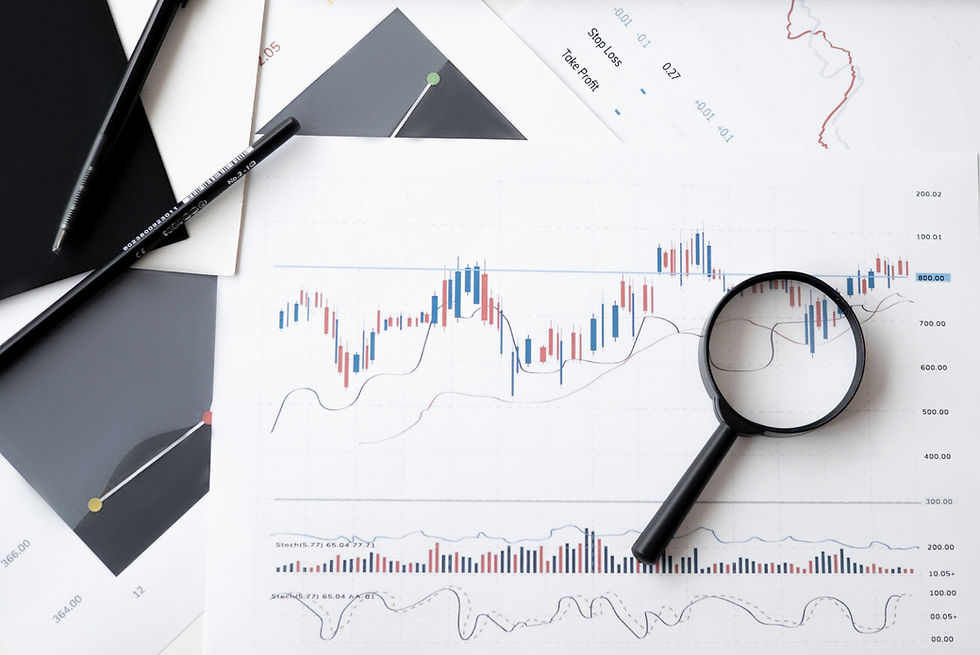The Fascinating Journey of Currency in India: From Barter to Digital Transactions
- TinkerChild
- Aug 21, 2023
- 3 min read

The history of currency in India is a captivating tale that spans millennia, reflecting the evolution of economic systems, technological advancements, and the intricate cultural tapestry of the subcontinent. From the early days of barter and commodity exchange to the modern era of digital transactions, the journey of currency in India is a testament to the nation's rich economic heritage.
Barter and Commodity Exchange
Long before the concept of currency emerged, the Indian subcontinent thrived on a barter system where goods and services were exchanged directly. This primitive system relied on mutual needs and wants, requiring a double coincidence of wants – the requirement that both parties in a transaction had to possess what the other desired. As societies grew more complex, the limitations of barter became apparent, and the need for a more efficient medium of exchange arose.
Cowry Shells and the Advent of Metal Coins
Around 6th century BCE, a significant development occurred with the introduction of cowry shells as a form of currency in some regions of India. These shells, found along the coast, were small, easily transportable, and recognizable, making them suitable for trade. However, due to their limitations, the use of cowry shells was gradually replaced by metal objects that evolved into coins.
The first metal coins in India are believed to have been introduced by the Mahajanapadas, ancient Indian kingdoms, around the 6th century BCE. These coins were usually made of silver or copper and bore inscriptions identifying the issuing authority. As time progressed, the design and variety of coins became more sophisticated, incorporating intricate symbols, inscriptions, and portraits of rulers. The Gupta Empire (4th to 6th century CE) is particularly renowned for producing exquisite gold coins that reflected the cultural and artistic achievements of the era.
The Age of Empires and Medieval Currency
With the rise and fall of empires across India, the nature of currency continued to evolve. The Delhi Sultanate and the Mughal Empire introduced their own currency systems, with various denominations of coins reflecting the changing political landscape. Silver rupees became a standard form of currency during this period, and their influence persisted even during the British colonial era.
Colonial Era and the Introduction of Paper Currency
The arrival of European colonial powers in India brought further changes to the currency landscape. The British East India Company introduced its own coinage and currency notes, initially using the existing systems as a basis. However, as trade and commerce expanded, the need for a more efficient form of currency became evident.
In 1861, the British colonial government established the Paper Currency Act, paving the way for the issuance of paper currency notes by authorized banks. The first official paper currency notes were introduced in denominations of 10, 20, 50, 100, and 1000 rupees. Over time, the British government took over the issuance of paper currency, leading to the creation of the Reserve Bank of India (RBI) in 1935 as the sole issuer of currency notes.
Post-Independence Reforms and Modernization
India's journey of currency continued to evolve after gaining independence in 1947. The Indian government, under the leadership of its first Finance Minister, R.K. Shanmukham Chetty, embarked on a series of currency reforms. The Indian rupee was decimalized in 1957, with the introduction of the decimal system of currency. One rupee was divided into 100 smaller units, known as paise.
In 1978, India undertook a momentous step by demonetizing higher denominations to curb the circulation of black money and counterfeit currency. This move led to the withdrawal of notes in denominations of 1,000, 5,000, and 10,000 rupees. It aimed to control inflation and promote transparency in financial transactions.
The Digital Age and Cashless Transactions
The 21st century brought about a new era of currency in India with the advent of digital transactions. The proliferation of smartphones and internet connectivity facilitated the growth of mobile wallets, online banking, and digital payment platforms. Initiatives like the Unified Payments Interface (UPI) have revolutionized the way Indians transact, allowing instant and secure peer-to-peer transfers through mobile apps.
The government's "Digital India" campaign, launched in 2015, further accelerated the shift towards digital transactions. Promoting financial inclusion, transparency, and efficiency, this campaign aimed to reduce the reliance on physical cash and promote the use of digital payment methods across the country.
Conclusion
The journey of currency in India is an intricate tapestry that weaves together economic, political, and cultural threads. From the early days of barter and cowry shells to the modern era of digital transactions, the currency has played a pivotal role in shaping India's economic landscape. The evolution of currency reflects the nation's resilience, adaptability, and capacity for innovation as it continues to navigate the dynamic currents of global economics and technological progress.
Note for UPSC Aspirants: For UPSC aspirants interested in exploring further, here are some keywords to guide your research: History of Banking, Monetary Policy, Financial Inclusion, Cryptocurrencies, Economic Reforms, Hyperinflation, Financial Literacy.




Comments